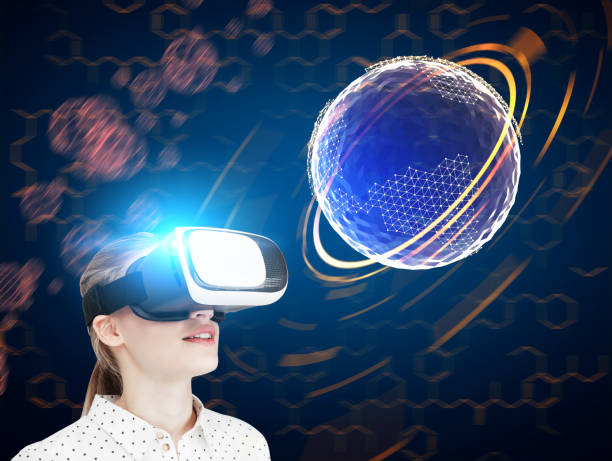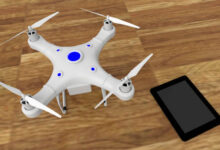How To Create AI-powered Virtual Reality Experiences

Artificial intelligence (AI) is rapidly transforming many industries, including virtual reality (VR). AI can be used to create more immersive and realistic VR experiences, as well as to personalize VR experiences to individual users.
In this article, we will discuss how to create AI-powered VR experiences. We will cover the following topics:
- What is AI-powered VR?
- Benefits of using AI in VR
- How to create AI-powered VR experiences
- Examples of AI-powered VR experiences
- FAQs
What is AI-powered VR?

AI-powered VR is the use of AI to create and enhance VR experiences. AI can be used to generate realistic environments, characters, and objects, as well as to simulate physics and interactions.
According to Techcrunch, AI can also be used to personalize VR experiences to individual users by analyzing their behavior and preferences.
Benefits of using AI in VR
There are many benefits to using AI in VR. Some of the key benefits include:
- More immersive and realistic experiences: AI can be used to generate more realistic environments, characters, and objects, as well as to simulate physics and interactions. This can lead to more immersive and realistic VR experiences for users.
- Personalized experiences: AI can be used to personalize VR experiences to individual users by analyzing their behavior and preferences. This can make VR experiences more engaging and enjoyable for users.
- New and innovative experiences: AI can be used to create new and innovative VR experiences that would not be possible without AI. For example, AI can be used to create VR experiences that allow users to explore different worlds, interact with historical figures, or learn new skills in a fun and engaging way.
How to create AI-powered VR experiences
There are a few key steps involved in creating AI-powered VR experiences:
- Choose the right AI technology: There are many different AI technologies available, so it is important to choose the right technology for your specific needs. Some factors to consider when choosing an AI technology include the type of VR experience you want to create, the budget you have available, and your level of technical expertise.
- Collect data: Once you have chosen an AI technology, you need to collect data to train your AI model. The type of data you need to collect will depend on the type of VR experience you want to create. For example, if you want to create a VR experience that allows users to interact with historical figures, you need to collect data about historical figures.
- Train your AI model: Once you have collected data, you need to train your AI model. This process can take some time, depending on the amount of data you have collected and the complexity of your AI model.
- Develop your VR experience: Once your AI model is trained, you can start developing your VR experience. This process will involve using the AI model to generate realistic environments, characters, and objects, as well as to simulate physics and interactions.
- Test and refine your VR experience: Once you have developed your VR experience, you need to test it with users to make sure that it is immersive, engaging, and easy to use. You may need to refine your VR experience based on user feedback.
Examples of AI-powered VR experiences
There are a number of AI-powered VR experiences that are already available. Here are a few examples:
- Google Earth VR: Google Earth VR allows users to explore the world using high-resolution satellite imagery and 3D models. AI is used to generate realistic 3D models of buildings, landscapes, and other features.
- Tilt Brush: Tilt Brush is a VR painting app that allows users to create 3D paintings and drawings in mid-air. Techtarget says AI is used to generate realistic textures and brushstrokes.
- Bigscreen: Bigscreen is a VR social platform that allows users to watch movies and TV shows together in a virtual theater. AI is used to generate realistic avatars and to simulate physics.
Frequently asked questions about How to create AI-powered virtual reality experiences
What are some of the challenges of creating AI-powered VR experiences?
Some of the challenges of creating AI-powered VR experiences include:
- Cost: Developing AI-powered VR experiences can be expensive, especially if you need to collect a lot of data or use complex AI technologies.
- Technical expertise: Creating AI-powered VR experiences requires some technical expertise. You need to have a good understanding of AI and VR technologies.
- Performance: AI-powered VR experiences can be computationally expensive. You need to make sure that your VR hardware is powerful enough to run your AI model in real time.
The use of more powerful AI technologies
As AI technologies continue to develop, we can expect to see more powerful AI models that can generate more realistic and immersive VR experiences.
For example, we may see AI models that can create VR experiences that are indistinguishable from reality.
The use of AI to personalize VR experiences
AI can be used to personalize VR experiences to individual users by analyzing their behavior and preferences. For example, AI can be used to create VR experiences that are tailored to the user’s interests, skill level, and learning style.
The use of AI to create new and innovative VR experiences
AI can be used to create new and innovative VR experiences that would not be possible without AI. For example, AI can be used to create VR experiences that allow users to explore different worlds, interact with historical figures, or learn new skills in a fun and engaging way.
Conclusion
AI has the potential to revolutionize VR. AI can be used to create more immersive and realistic VR experiences, as well as to personalize VR experiences to individual users.
AI can also be used to create new and innovative VR experiences that would not be possible without AI.
If you are interested in creating AI-powered VR experiences, there are a number of resources available to help you get started. There are also a number of AI-powered VR development platforms that can make it easier to create AI-powered VR experiences.








